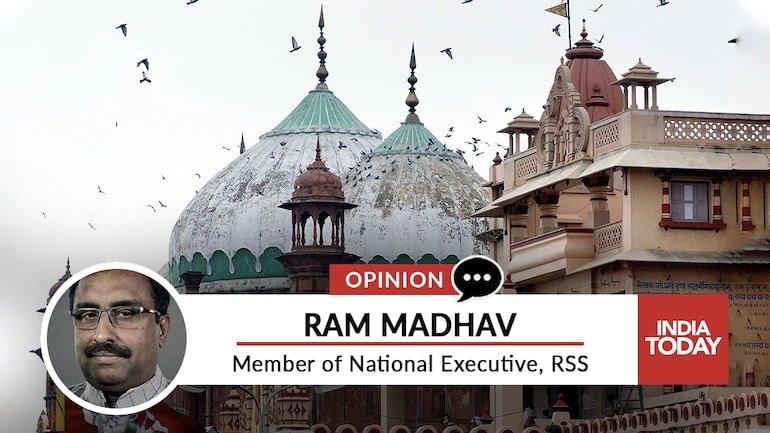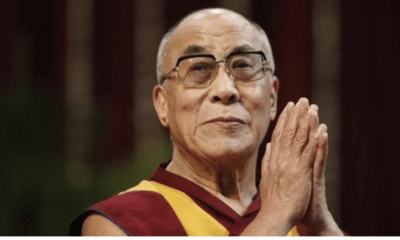
|
Getting your Trinity Audio player ready...
|
While Hindus, Muslims and Christians reaffirm their commitment to tolerance and religious freedom, the majority still prefer to confine their relations in marriage and friendship to their co-religionists only.
In an engaging study on the religious-political reality of America, renowned journalists John Micklethwait and Adrian Wooldridge concluded in their book The Right Nation that the more than two-century-old democracy has decisively shifted to the right. Religious and political conservatism has come to stay as the mainstream American identity for a long time to come, in spite of the Democratic Party intermittently coming to power, they opined.
A recently released survey report of the Washington-based PEW Research Centre on religion in India highlights similar interesting insights. Unlike America, India has a national history of several millennia. Its societal mores have evolved over a long and often intriguing historical journey. A politically, linguistically and socially diverse demography has been woven into a united society on the strength of an overarching religious-cultural identity. Swami Vivekananda had described this phenomenon in the words: “Dharma Praana Bharata” — meaning, the religious-cultural identity was the lifeline of India.
The PEW’s survey puts an affirmative seal on this description of India. India is a country of believers in God, a vast majority of whom were absolutely sure about His existence. If the Buddhists, for whom belief in God was not a core tenet of religion, are excluded, almost 95% of Indians of all other religions believe in God. Most Indians, cutting across religions, also believe in extramundane concepts like karma, fate, reincarnation, purification and angels. That makes India the most religious country.
But then, the PEW survey also underscores simmering contradictions among religions underneath this macro picture of religiosity. While Hindus, Muslims and Christians reaffirm their commitment to tolerance and religious freedom, the majority still prefer to confine their relations in marriage and friendship to their co-religionists only. Over 66% Hindus said that they would prevent their men and women from marrying into other religions. This figure is even higher among the Muslims, 80% of whom insisted that it was very important to stop their women from marrying outside the religion. Dietary habits like beef-eating also divide the communities with over 72% Hindus insisting that beef-eating was un-Hindu. Although almost all the great leaders of India’s independence movement were opposed to India’s partition, seven decades later, an increasing number of Hindus came to believe that partition was good for the country.
Many of these findings of the PEW survey might not be great revelations for Indians. Despite occasional expression of sentiments about common DNA, a gulf existed between the major religious communities like Hindus and Muslims over centuries. Seeds of this gulf were laid in what historian Will Durant described as “probably the bloodiest story in history”, namely the Islamic conquest of India. Efforts by Mughal Emperors like Akbar for syncretism did not succeed due to various historical factors like continued iconoclasm and religious orthodoxy under him and after. In any case, his successor Aurangzeb epitomised religious intolerance and bigotry. The British era had accentuated the divisions in the later centuries.
The revolt in 1857 was one occasion when the Hindu and Muslim sepoys came together to fight against the British. Cynics refuse to see it as any unity of minds insisting that the two had revolted for separate reasons – Hindus on the suspicion that the cartridges of the Enfield rifles, which required the sepoys to use their teeth to rip open, were greased with cow fat, while Muslims believed that pig fat was used for the same. Hindu sepoys swore by the waters of sacred Ganges while Muslim sepoys chose the holy Koran.
Yet, a staunch Hindutva ideologue like Savarkar had exuberantly called it a golden episode of Hindu-Muslim unity. Referring to the revolt in Delhi in May 1857, Savarkar wrote in ‘The First War of Independence’: “… these five days proclaimed by beat of drum the end of the continuous fight between the Hindus and the Mahomedans dating from the invasion of Mahmud of Ghazni and on these days it was proclaimed first that the Hindus and the Mahomedans are not rivals, not conquerors and conquered, but brethren. Bharat mata pronounced the sacred spell of these days. ‘Hence forward you are equal and brothers. I am equally the mother of you both’.”
This exuberance remained short-lived. The rise of Muslim politics from Sir Syed Ahmed Khan to Mohammad Ali Jinnah had buried the hope for unity. Henceforth, Hindu-Muslim unity became a political obsession, with the objective of preventing the partition of the country. Gandhi was in the forefront pleading with the Muslims to remember that ‘many Hindus and Mahomedans own the same ancestors and the same blood runs through their veins’. Nehru passionately told the students of Aligarh Muslim University in 1948, “You are Muslim and I am a Hindu. But that does not take us away from that cultural inheritance that is yours as well as mine.”
Many leaders like Lala Lajpat Rai wanted Hindus and Muslims to come together, but were unsure given “the injunctions of the Koran and Hadis”. Rai had hoped that the “learned mind and wise head” of the Muslims would find a solution. Some, like Ambedkar, were however dismissive of the idea. “Before the Hindus complain of the destruction of the unity of India, let them make certain that the unity they are harping upon does exist. What unity is there between Pakistan and Hindustan?”, wrote Ambedkar. In his opinion, the two communities were living in an armed truce only.
Seven decades after the independence, as the PEW survey had shown, Hindu assertion has come to occupy the national center stage in India with 65% Hindus believing that Hindu and Indian were coterminous. Politics too did not help take Hindu-Muslim unity beyond a political strategy. Eminent psychologist Sudhir Kakkar grimly summed up the reality about inter-communal relations, saying: “It was a multicultural coexistence rather than any merger into a single, composite culture. Hindus and Muslims lived together separately. They were more than strangers, not often enemies, but less than friends.”
It underscores the need for continued efforts for Hindu-Muslim unity. Those efforts should be viewed as a genuine and optimistic urge for building greater national cohesion.
(The article was originally published by India Today on July 12, 2021. Views expressed are personal.)



